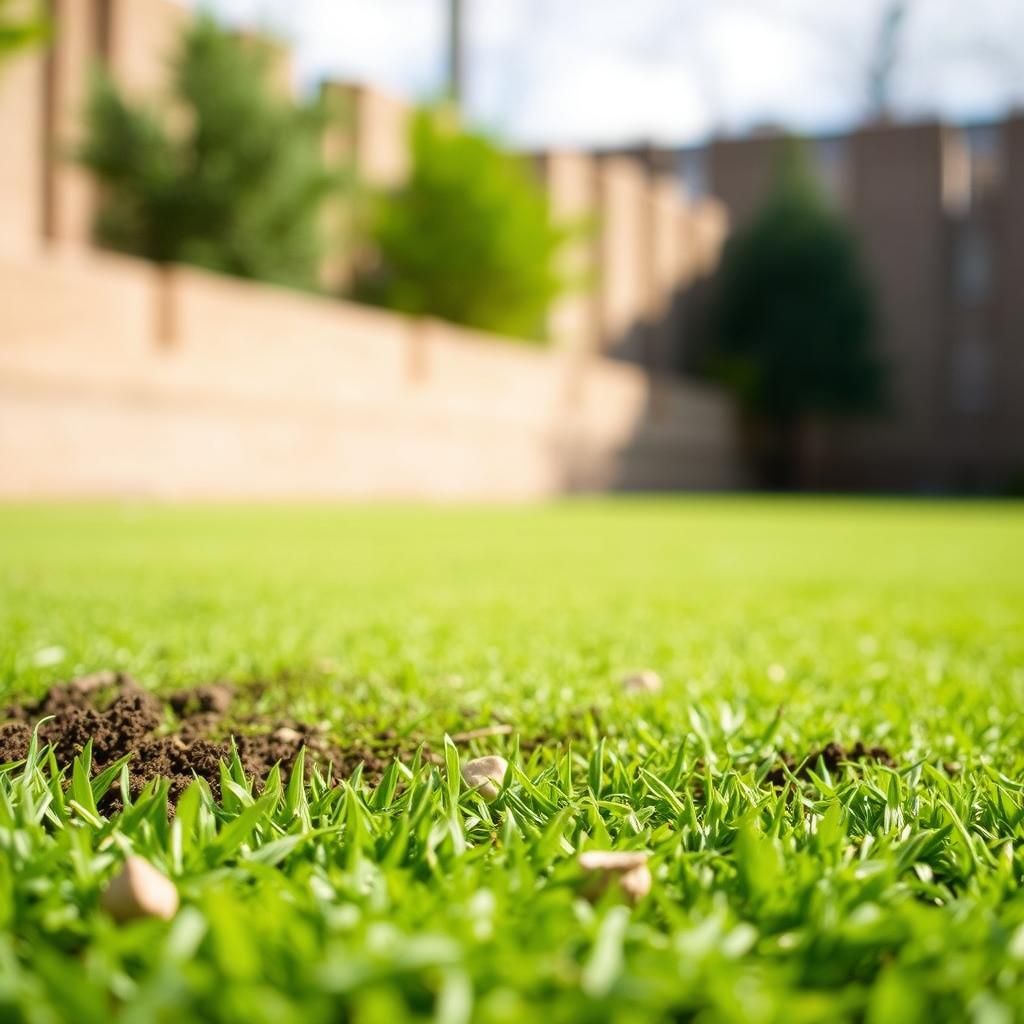Can I Lay Turf Without Topsoil? Essential Tips for Successful Lawn Installation

When embarking on a lawn installation project, many homeowners wonder whether it's possible to lay turf without topsoil. While topsoil is often touted as essential for healthy grass growth, various factors can influence the success of your turf installation. This article will explore the feasibility of laying turf without topsoil and provide essential tips to ensure a lush, thriving lawn. Understanding the implications of omitting topsoil, as well as alternative methods and preparations, can empower you to make informed decisions and achieve the results you desire for your outdoor space. Let's delve into the key considerations for successful lawn installation.
Can I Lay Turf Without Topsoil?
Laying turf without topsoil is possible, but it is generally not recommended due to the potential consequences on the health and establishment of the grass. Topsoil provides essential nutrients and a suitable environment for the roots of the turf to establish, promoting better growth and a healthier lawn. Without topsoil, the turf may struggle to adapt to the underlying soil conditions, leading to inadequate drainage, poor nutrient availability, and increased susceptibility to pests and diseases. If topsoil is unavailable, it’s crucial to prepare the existing soil by aerating and adding organic matter to create a more favorable environment for the turf.
Why Is Topsoil Important for Turf?
Topsoil is crucial for turf as it contains a mix of organic matter, nutrients, and microorganisms that support healthy grass growth. It acts as a reservoir for water and nutrients, which are essential for the roots to uptake. Without topsoil, turf may experience stunted growth, lack of color, and increased stress during drought conditions. Additionally, topsoil helps to improve soil structure, encouraging better aeration and drainage which are vital for root development.
What Can Happen If You Lay Turf Without Topsoil?
If you lay turf directly on subsoil without a layer of topsoil, the grass may struggle to take root effectively. The lack of nutrient-rich topsoil can lead to several problems including poor growth, bald patches, and an overall unhealthy lawn. Furthermore, without the protective layer of topsoil, the turf may be more affected by temperature fluctuations and may have difficulty retaining moisture, increasing the risk of die-off during extreme weather conditions.
How to Prepare Soil Without Topsoil?
In the absence of topsoil, preparing the ground properly can improve the chances of successful turf establishment. Begin by clearing the area of debris and then aerate the existing soil to break up compacted layers. Mixing in organic matter such as compost can enhance the nutrient profile and improve moisture retention. Additionally, consider using a starter fertilizer to give the grass an initial boost, helping it to establish roots in the challenging conditions.
See also:
Best Practices for Laying Turf on Poor Soil
When laying turf on poor soil, it's essential to take a few additional steps to ensure success. Start by ensuring the surface is level, and then lay the turf as soon as possible to prevent it from drying out. Water the turf immediately after installation to help it settle and establish. Continue to monitor moisture levels regularly, especially during the first few weeks, and be prepared to implement a watering schedule to provide consistent hydration as the grass roots develop.
Alternative Solutions for Laying Turf Without Topsoil
If topsoil is not an option, consider alternatives such as using a soil conditioner or a synthetic topsoil substitute made from organic materials. These products can help improve soil structure and provide vital nutrients to the grass. Additionally, using grass seed instead of turf could be another viable option, as it allows for the deep penetration of roots into the subsoil, where they can tap into moisture and nutrients that are not available in the top layers.
| Aspect | With Topsoil | Without Topsoil |
|---|---|---|
| Nutrients | Rich in organic matter and nutrients | Poor nutrient availability |
| Water Retention | Better moisture retention | Inefficient moisture retention |
| Root Establishment | Easily establishes roots | Struggles to establish roots |
| Growth | Healthy, vigorous growth | Slow or stunted growth |
| Pest Resistance | Stronger against pests | More susceptible to pests |
Understanding the Importance of Topsoil for Turf Installation
Installing turf without topsoil can lead to various challenges that affect the health and aesthetics of your lawn. While it is possible to lay turf on other surfaces, such as sand or clay, the absence of topsoil can hinder root development and nutrient uptake. Topsoil acts as a buffer, providing essential minerals and organic matter that support turf growth. Without it, the grass may struggle to establish itself, leading to poor overall vigor and a patchy lawn appearance. Therefore, while you can technically lay turf without topsoil, it is highly recommended to assess your soil composition and make necessary adjustments to ensure a healthy and thriving lawn.
What is Topsoil and Why is It Essential?
Topsoil is the uppermost layer of soil that is rich in nutrients, microorganisms, and organic materials that are crucial for plant growth. It serves as the primary growing medium for grass and other plants, providing necessary water retention, proper drainage, and a habitat for beneficial soil organisms. Without topsoil, turf may not receive the essential nutrients it needs, resulting in weak and unhealthy grass. Understanding the role of topsoil helps emphasize its importance in achieving a lush and vibrant lawn.
Alternatives to Topsoil for Laying Turf
If topsoil is not available, some alternatives can be considered, like using compost, peat moss, or well-rotted manure. These materials can improve soil structure and provide some nutrient content that grass may require. However, relying solely on these amendments can lead to imbalances if not applied correctly. Incorporating a mix of these materials can help create a conducive environment for turf growth, albeit with careful monitoring to avoid issues such as compaction or improper drainage.
See also:
Steps to Prepare Soil Before Laying Turf
Before laying turf, it is crucial to prepare the soil properly. This preparation involves clearing any debris, removing old grass or weeds, and tilling the soil to a depth of at least 4 inches. If topsoil is being used, it should be spread evenly to create a smooth and even surface. For areas lacking topsoil, consider adding a layer of compost or soil amendments to boost nutrient levels. Moreover, it’s essential to ensure proper drainage and test the soil pH to maintain optimal conditions for turf establishment.
The Role of Drainage in Turf Installation
Good drainage is vital when laying turf to prevent waterlogging, which can lead to root rot and other issues that may compromise grass health. Inadequate drainage can also inhibit proper soil aeration, affecting the turf's ability to access necessary resources. To improve drainage, especially when topsoil is not used, incorporating organic matter and creating gentle slopes can help direct water away from the turf area. Proper drainage ensures that the turf remains adequately hydrated without becoming oversaturated, paving the way for better growth.
Maintenance Tips for Turf Laid Without Topsoil
Maintaining turf laid without topsoil requires a more attentive approach to care. Regular watering will be crucial since the lacking nutrients in the underlying layer may lead to rapid drying. Additionally, consider applying liquid fertilizers more frequently to compensate for the deficiency in nutrient uptake. It’s also essential to monitor for any signs of stress or disease, as the absence of a robust topsoil layer may leave the turf vulnerable. Adopting a proactive maintenance routine can significantly enhance the chances of success when establishing a lawn without topsoil.
Questions from Our Readers
Can I lay turf without topsoil?
It's generally not recommended to lay turf without topsoil, as topsoil provides essential nutrients and creates an ideal environment for root establishment. Laying turf directly on subsoil can lead to poor growth and an unhealthy lawn.
What happens if I lay turf on hard ground?
Laying turf on hard ground can restrict root growth and prevent the absorption of water and nutrients. It's important to loosen the soil first to ensure better drainage and promote a healthier lawn.
See also:
How deep should topsoil be before laying turf?
Ideally, topsoil should be at least 4 to 6 inches deep before laying turf. This depth helps support healthy root growth and provides sufficient nutrients for the grass to thrive.
Can I improve my turf's success without topsoil?
While it's challenging, you can improve the chances of your turf's success without topsoil by amending the existing soil with organic matter or fertilizer. However, it's still advisable to add topsoil for the best results.

If you want to read more articles like Can I Lay Turf Without Topsoil? Essential Tips for Successful Lawn Installation, we recommend you check out our Turf category.
Leave a Reply
Related Articles